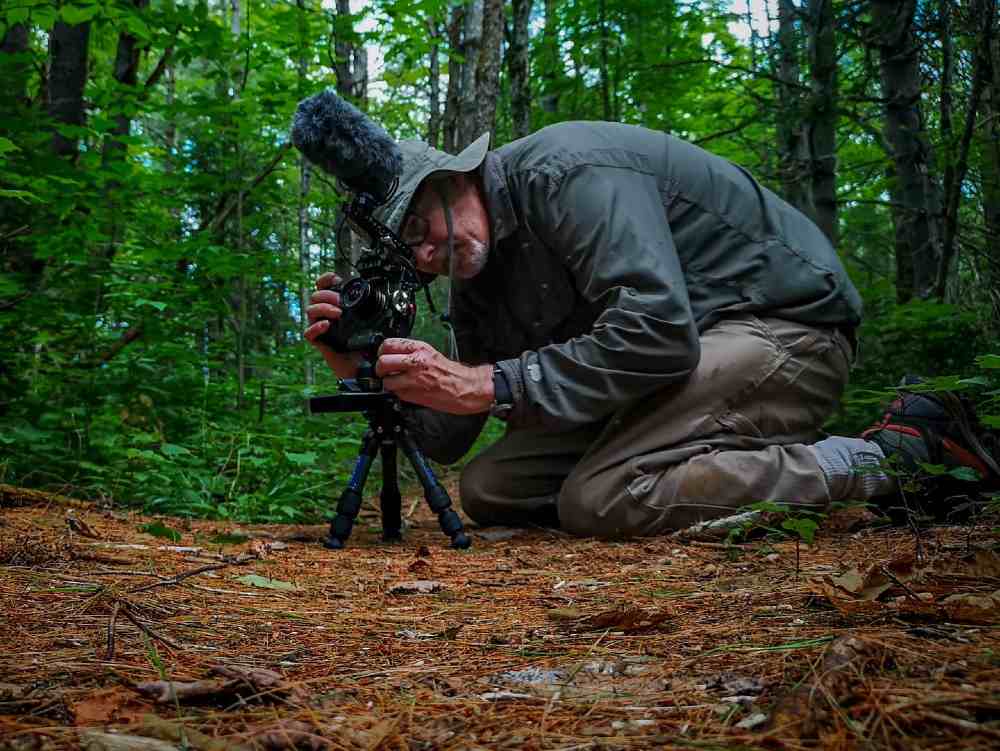

Drone footage is super cool and epic but. . .
Count me firmly in the camp of those loving drone footage and photography. Not going to lie: Also count me as biased.
I shoot drone footage and do aerial photography as part of my professional work. Drone content is often mesmerizing to watch. No doubt about it, the footage brings an awesome and immersive perspective to many outdoors tourism and environmental videos.
But. But. But. Hey, you knew there was a but on its way. Drone footage can be overused.
I’ve watched many outdoors and tourism videos that have drone footage. The scenery is epicly stunning and inspiring. The views are phenomenal. Drone footage can be like a drug. It creates an immediate high when you see some scenes.
Drone footage wows. But….
Now don’t get me wrong. There are some excellent outdoors videos that strike a really nice balance of drone footage and storytelling elements. But let’s not forget there is a difference. Drone footage wows. Seeing and hearing faces helps us connect. When both are working together, it really complements the story.
The problem is often this: Drone footage for the sake of drone footage has left many videos suffering from drone-itis. What is drone-itis? It’s an affliction where a business is so obsessed about getting drone footage (“Hey, we have to have a drone footage!”) that it forgets about storytelling. Instead, the drone footage dominates the video. Look, no question, drone footage can clearly provide some wow. It can make folks say “I want to go there!” But alone it won’t tell the story of your business like a storytelling video will do. Humans connect with humans. We want to see and listen to people. And it’s that storytelling component that is absolutely essential. It’s the main ingredient needed to create a personal attachment with the viewer.


Drone footage makes awesome broll
So, what is drone footage good for? Well, it’s often meant as an option for B roll footage (the fancy term we use for accent footage that establishes scenes and places, or helps fill in gaps over talking scenes). Drone footage also helps as establishing footage. Establishing footage helps a viewer see the You Are Here. Drone footage is usually not your A roll footage, the stuff that represents the heart and guts of your story. This A roll footage is usually shot by a skilled human (a.k.a. videographer) with a video camera in his/her hands. The human videographer can sense scenes, adjust rapidly, interact with you to get the best footage, and coach you to look and sound your best in front of the camera (because that coach is right there with you, and not a radio-controlled drone 300 feet in the air).
Anyone can buy a drone today, fly it overhead and upload aerial content of practically anything and shout “Look what I made!” That doesn’t mean they are a professional videographer.


Think storytelling first
The takeaway is this…… think storytelling first and hire a professional videographer with a solid understanding first and foremost in storytelling.
If drone footage is needed to complement the storytelling, your videographer can either do it (if licensed), or contract a licensed drone videographer to shoot the required aerial footage that can be blended into the final video.
Still, don’t go overboard with the amount of drone footage in your tourism videos. Sure, panoramic footage that soars across landscapes looks cool, but we’ve quickly reached the point where savvy storytellers know that less is more for drone footage. Tantalize the viewer with short aerial clips, but don’t forget to be grounded with footage too.
Remember that the true value of any small business video is the story, and that will never change. A drone is simply one new optional tool in array of established tools to tell a great story. Ten seconds of drone footage may be enough. Fifteen seconds. Or maybe more. Balance is the right ingredient.
You need to always ask yourself, as with any part of filmmaking, is drone footage absolutely essential and primary to telling the story? And how much drone footage is really needed?
- The Value of Journalism in Conservation Filmmaking - May 1, 2024
- What’s The Importance of B-roll in Conservation Storytelling? - April 22, 2024
- What’s It Really Like Being a Conservation Filmmaker? - April 15, 2024




